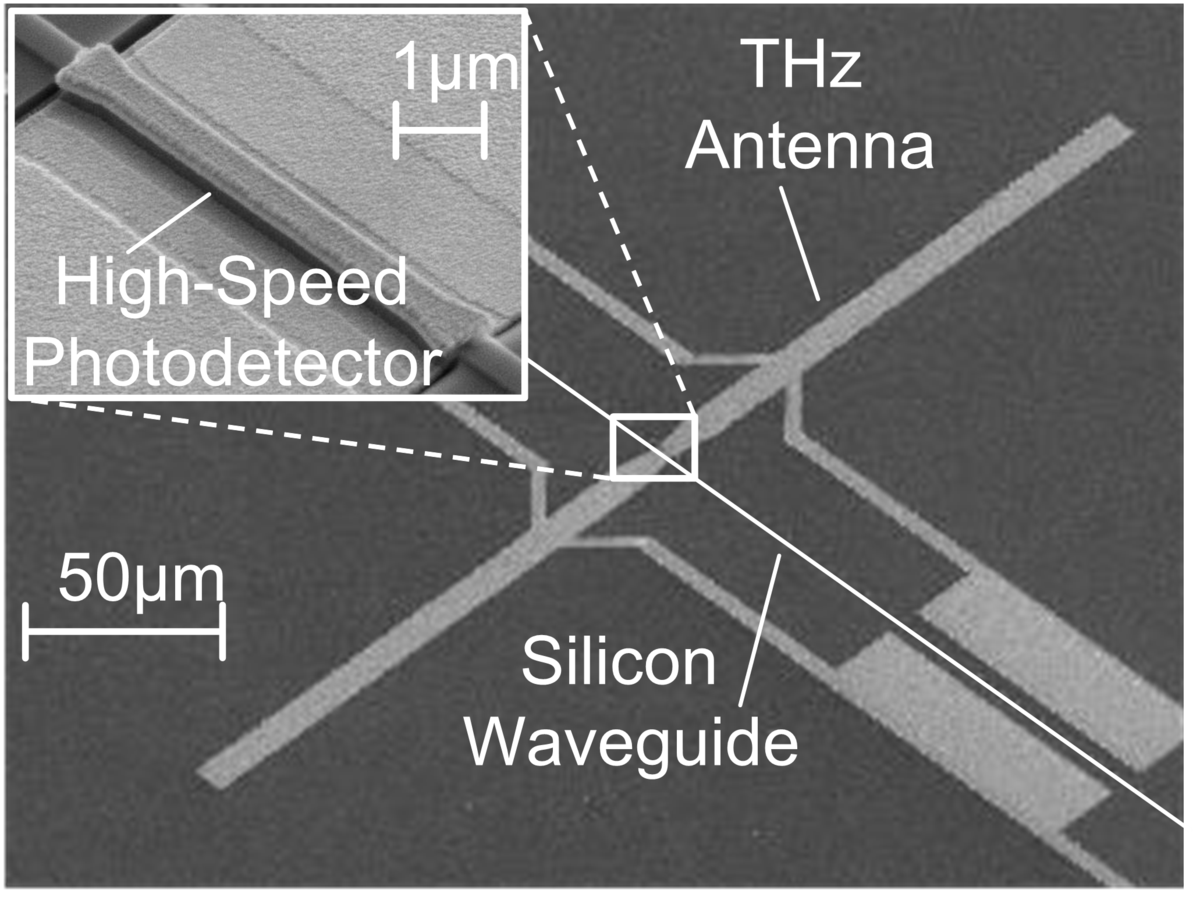Photonics is a thing, and it very much treats light as electromagnetic waves in waveguides on silicon, with mixers, delay lines, matching circuits, amplifiers etc as you'd do for a RFIC.
Just as an antenna doesn't generate the signal to be transmitted, an oscillator is used to generate a carrier wave – just that the oscillator happens to be a laser diode, sometimes on the same substrate, instead of a discrete transistor, an L and a C. An antenna is just an impedance matcher between transmission line and free-space, and that's what you find on every laser diode die, standard LED die at the point where you try to convert the surface-bound or substrate-travelling lightwave into something emitted into the fiber or a lens or free space.
What you definitely don't find is the classical dipole being fed with a current coming from an oscillator. That doesn't work, as most such components are comparable in size as the antenna. But, there are photonic antennas. These convert a free-space EM wave to a guided wave, just as your phone's antenna converts free-space waves to waves in a coax cable (and vice versa), while simulataneously mixing things with a lightwave. This is not an antenna in the sense of a \$\lambda/4\$-monopole or something.
They are fiddly:
 THz Antenna coupled to a high-speed silicon plasmonic photodetector enabling opto-electronic generation and detection of waves by photomixing within a THz-bandwidth. Source: Institute of Photonics and Quantum Electronics (IPQ), Karlsruhe Institute of Technology
THz Antenna coupled to a high-speed silicon plasmonic photodetector enabling opto-electronic generation and detection of waves by photomixing within a THz-bandwidth. Source: Institute of Photonics and Quantum Electronics (IPQ), Karlsruhe Institute of Technology

